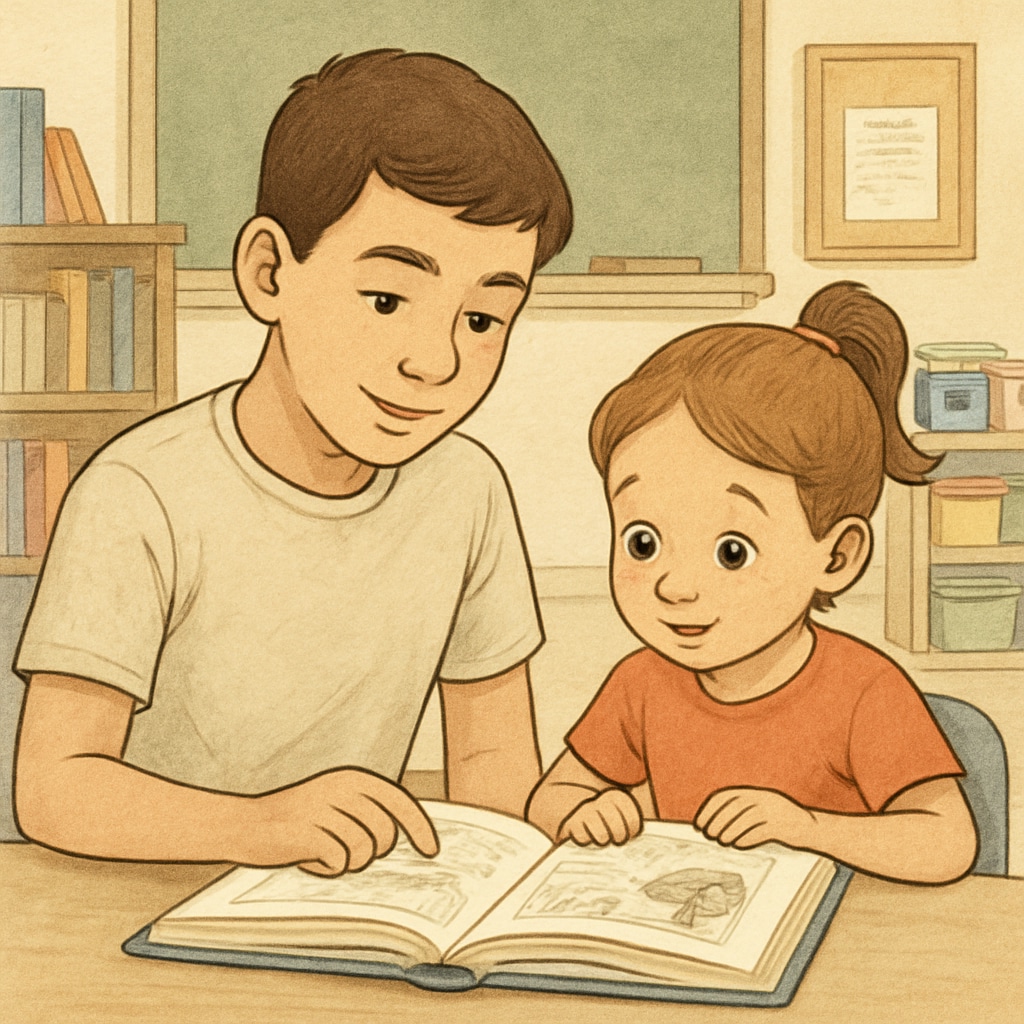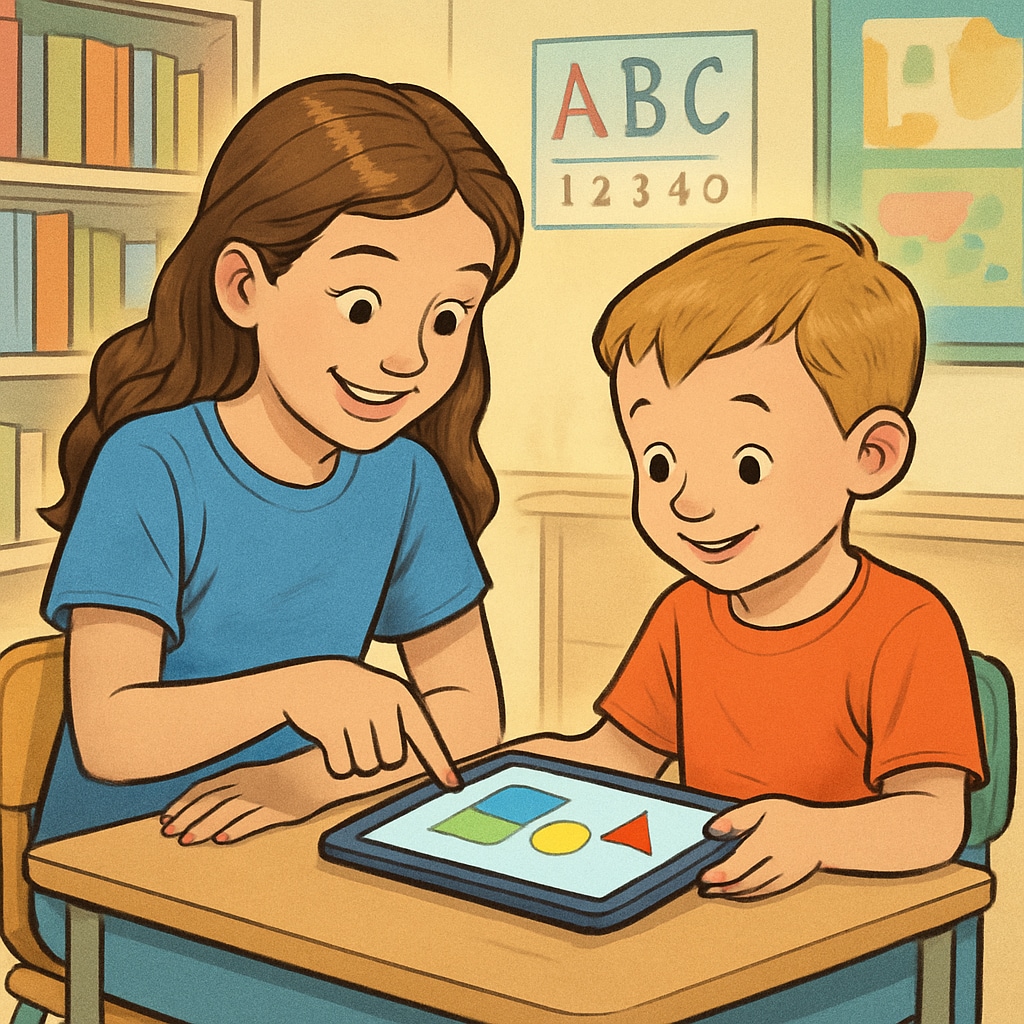Creating a meaningful connection between kindergarten and fourth-grade students through an interactive buddy program can be a transformative experience for both age groups. This initiative combines fun literacy games, collaborative projects, and computer skills sharing to encourage mutual learning, teamwork, and emotional growth. By fostering relationships across age groups, schools can cultivate empathy, leadership, and a sense of community.
Building a Foundation: Why Cross-Age Buddy Programs Matter
Cross-age buddy programs serve as a powerful tool to enhance social, emotional, and cognitive development. For kindergarteners, interacting with older peers provides role models and boosts their confidence. Fourth-grade students, on the other hand, develop leadership skills, patience, and empathy by mentoring their younger buddies. These programs create a win-win situation where both age groups benefit from the partnership.
For example, a study published on Britannica’s Education page highlights the importance of peer collaboration in enhancing communication and problem-solving skills. Such activities also help children feel more connected to their school environment, ultimately improving their academic and social outcomes.
Interactive Literacy Activities: Strengthening Reading and Writing Skills
Literacy activities are an excellent way to kickstart the buddy program. Kindergarten students often struggle with basic reading and writing, which fourth graders can help reinforce. Activities such as paired reading, where buddies take turns reading a story aloud, or guided writing sessions, where older students assist younger ones in creating short sentences, are both effective and enjoyable.

Additionally, incorporating phonics games or flashcards can make learning fun and engaging for kindergarteners. Fourth graders can design creative quizzes or illustrations to help their buddies recognize letters and words, encouraging active participation.
Creative Collaboration: Art and STEM Projects
Creative projects, such as art or STEM (Science, Technology, Engineering, and Math) activities, are another way to foster teamwork and problem-solving skills. For example, pairs can work together to build simple structures using blocks or design colorful artworks that represent shared interests.
One particularly engaging activity involves creating “buddy scrapbooks.” Kindergarteners and fourth graders can contribute drawings, photos, and short captions describing their experiences together. This not only strengthens their bond but also allows them to reflect on their collaborative achievements.
In addition, hands-on STEM projects—like building paper airplanes or conducting simple science experiments—encourage curiosity and critical thinking. These activities are supported by research from institutions like Wikipedia’s STEM Education page, which emphasizes the importance of early exposure to scientific concepts.
Sharing Computer Skills: Bridging the Digital Divide
With technology playing a crucial role in education, computer skills sharing offers an opportunity for fourth graders to mentor their kindergarten buddies. Fourth-grade students can guide younger children through basic tasks, such as using educational apps, navigating online games, or typing their names on a keyboard.

This interaction not only introduces kindergarteners to technology but also reinforces the older students’ understanding of digital tools. As a result, both age groups gain confidence in their technological abilities, preparing them for future academic challenges.
Measuring Success: Evaluating the Buddy Program
To ensure the program’s effectiveness, schools should implement regular evaluations. Teachers can use surveys, observation checklists, or feedback sessions to assess the progress of both kindergarten and fourth-grade students. Metrics like improved literacy, enhanced social skills, and increased enthusiasm for learning can serve as indicators of success.
The buddy program can also evolve based on feedback, incorporating new activities or adjusting existing ones to better suit the needs of participants. Schools might consider organizing end-of-year celebrations or exhibitions to showcase the achievements of buddy pairs, fostering pride and a sense of accomplishment among students.
Readability guidance: Maintain short paragraphs for clarity and include transitional phrases for smooth flow. Lists should summarize key points where appropriate, with an emphasis on actionable insights.


